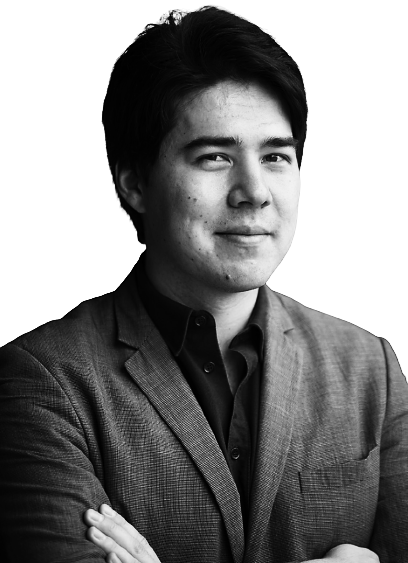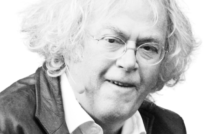

Historians have long sought to understand to what extent, and why, religiosity waned in Western European life over the eighteenth century. Stanford historian Andrei Pesic recently published an article in the leading historical journal, Past & Present, about how music might help us to rethink this question[1]. He spoke with EuropeNow about his article and forthcoming book.
—Benjamin Bernard for EuropeNow
EuropeNow Your article in Past & Present focuses on a specific institution in eighteenth-century Paris: the Concert spirituel. What was this concert, and why do you say it became secular over the course of the Enlightenment?
Andrei Pesic The Concert spirituel (spiritual concert) was one of the earliest and longest lasting public concerts in Europe, running all the way from 1725 to 1790. Concerts were a novelty at the turn of the eighteenth century: before then, large-scale orchestral and choral music had been linked with theatrical representations (like the opera), religious ceremonies, or for court occasions. The birth of the public concert provided a new commercial venue for music, where anyone could attend, provided that they could afford the tickets (which were costly at the Concert spirituel). When I say that the Concert spirituel was secularized, I mean that its repertoire began with a largely sacred repertoire, because it was the only entertainment allowed during religious holidays when the theaters were closed. But over the course of the century, this religious repertoire gradually declined, then finally collapsed, with the concert mostly playing symphonies and opera arias by the 1770s.
EuropeNow Unlike previous historians who emphasized shifts in ideology or devotional practices that spurred eighteenth-century secularization or dechristianization, you point to an institutional explanation. If I understand right, you argue that as new musical entertainment institutions sprouted around the Concert spirituel, it could no longer rely on the protection its royal monopoly offered. It “inadvertently” had to compete for audiences with purely secular concerts and therefore adopted a secular repertoire of its own in a cutthroat environment of market competition. You qualify your argument in specifying that there were other varieties of secularization during the Enlightenment. Is there still a role for ideology or belief in the changing repertoire of the Concert spirituel?
Andrei Pesic It’s a great and difficult question: how to balance the importance of ideas and the broader social forces that both shape and are shaped by them? Older debates about secularization tended to focus either on battles between philosophers and the Church, or else on social history (such as how many people donated to the church in their wills). The problem with the former approach is that it often exaggerated the immediate impact of philosophical debates. The problem with the latter was a tendency to jump from intriguing data to unwarranted conclusions about people’s inner states, in other words, that changing religious practices equated to declining belief. If we focus instead on what can be measured—practices, in this case the proportion of religious versus secular works—we explore important changes that took place, without undue speculation about how this may or may not have translated into changing beliefs.
By seeking out “inadvertent” effects related to market structures, I don’t mean to deny the existence of intentional or ideological programs of secularization in other instances (in the fight against book censorship, for example). Yet I think that being attentive to instances of inadvertent secularization will allow for a richer understanding of many domains of life where ideology was unlikely to have been the primary driver of the dramatic changes we observe. Part of the power of this explanation is that it can account for gradual change: as audiences became habituated to hearing religious music during Lent, they might not have been shocked to hear a few arias mixed in, and then perhaps a symphony replaced one religious piece, and so on. Thirty years later, there wasn’t much religious music left at all.
EuropeNow One of the reasons European history still matters amidst a “global turn” in history-writing is the continuity of early modern European institutions: there are universities and symphony orchestras around the world. European studies would benefit, then, from having a robust account of historical change through institutions. What is “institutional history” for you—a topic, method, theory, or something else? Furthermore, sometimes institutional histories seem to rely on an argumentative structure that emphasizes how administrative constraints entailed path dependencies with predetermined “knock-on effects.” Is “path dependency” as an explanation for historical change a trap that historians of institutions ought to avoid? Or can attending to material or institutional constraints open up new possibilities for understanding agency and causality in the past?
Andrei Pesic Institutional history, for me, is one way of getting beyond the old dichotomy that’s often drawn in historical analysis between structure and agency. By providing an intermediate level in between large-scale social analysis and focusing on individuals, institutional history can clarify how “structural” forces were often in fact shaped at decisive moments by a few individuals or happenstance events; and on the other hand, institutions show us many concrete instances when attempts to exert individual agency were unable to overturn the inertia of traditions, legal procedures, or pressure from market forces.
I draw on several sociological theories from what’s called the “neo-institutionalist” approach. This approach grew out of Max Weber’s insight that modern organizations often converge on similar forms (like bureaucracy), but revisited Weber’s teleological conclusion of seeing such forms as all-conquering because of their efficiency.[2] This neo-institutionalist perspective can offer historians tools to think about why institutions might converge on common forms for reasons that were not predetermined: in other words, there can be top-down pressures to converge on certain examples, but there can also be fumbling and piecemeal responses by confused individuals who, seeking to make their institution succeed, imitate their peers and competitors.
I think anyone who has observed the functioning of cultural institutions today has a sense of the messy and often mimetic decision-making processes that take place there. Extending this insight to the past, for me, adds plausibility to our analysis of historical actors. It doesn’t assume that there’s always a grand plan, but that we can still detect important patterns emerging from these piecemeal institutional decisions. Also, I think it’s crucial not to focus too narrowly on a single institution, because this would miss so much of the dynamics between institutions; even if your focus is on one institution, you need to situate it in the broader matrix of power and competition that surrounds it.
There are, of course, limitations to institutional histories: often source problems limit how much we can know about the decision-making processes within institutions. For example, for my own research, I would have dearly loved to know more about the decisions of the Archbishopric of Paris, who might have objected more strongly to the multiplication of entertainments during Lent, but many of these records were destroyed during eighteenth- and nineteenth-century revolutions.
EuropeNow What is the role of the music itself in your research? Do music theoretical, compositional, and sonic aspects matter to the story of the secularization of the Concert spirituel?
Andrei Pesic In a word, yes! Music matters in this story. In my forthcoming book-length study, The Enlightenment in Concert, I try to give a sense of the music that was played in the concerts and the experience of attending them! I think that in addition to the more simplistic judgement about whether the subject matter of a piece was religious or secular, that one can learn a lot by contrasting the stylistic changes that took place. It’s stacking the deck a bit in favor of my argument, but one can’t listen to the simplicity and gravity of a Latin motet performed early in the Concert spirituel’s history (such as Michel-Richard de Lalande’s De Profundis) alongside the gallant jollity of a secular choral work from the Concert’s later years (like François-André-Danican Philidor’s Carmen Saeculare) without thinking that something important had changed. Interdisciplinary work is always a delicate (and maybe impossible) balance—historians might struggle with too much musical analysis and musicologists might bemoan its absence, but it would be a pity not to include more insights from music to broader accounts of our understanding of the past.
EuropeNow Do you think the “inadvertent secularization” of the Concert spirituel has broader implications for studying secularization across Europe?
Andrei Pesic Absolutely. I think that one of the most fascinating things about the growth of concert culture in the eighteenth century is the sheer speed at which it became a pan-European phenomenon: in the 1670s, there were only a few short-lived concerts, whereas by the 1730s they had spread across the continent. My book studies how the Concert spirituel was imitated in the eighteenth century in places as different as Haiti (then the French Caribbean colony of Saint-Domingue) and Berlin during the reign of Frederick the Great. By broadening the focus from Paris, we can see that what “sacred” meant differed widely in moving from one context to another.
The eighteenth century was another age of globalization, with ideas, artworks, people, and even institutions traveling readily across borders. Yet meanings changed significantly in new surroundings. The secular repertoire of the Saint-Domingue concert, for example, went even further in terms of pushing the boundaries of what would have been acceptable in Paris. And Berlin’s market for entertainment was relatively unconstrained compared to Paris, which made the Berlin Concert spirituel distinguish itself in different ways—for example by seeking to educate its listeners and make commercial concerts into prestigious social occasions, in contrast to the more popular café concerts it competed with.
In all of this, though, the Parisian Concert’s specific configuration of religious music and commercial entertainment fell somewhat by the wayside. There is nothing inherently secularizing about market forces, as we can see vividly in the accommodation of modern-day evangelist Christianity and capitalism in the United States. Yet in the specific behavioral constraints present in eighteenth-century Europe, putting institutions into a competitive market led them to experiment beyond their original sacred remit. These were mostly not purposeful attempts to break down religious authority, but attempts to appeal to an audience that sought novelty in the concert hall. I find today’s debates about the legacy of secularization and ideology—debating “laïcité” in the French case—to have beaten a dead horse for long enough. I think that looking how markets and inadvertency enters into the story might at least open up new topics for these questions that remain very much relevant today.
Andrei Pesic is a cultural and intellectual historian of early modern France. He teaches French literature and history at Stanford; before arriving there, he was a postdoctoral researcher at the New York Public Library.
Benjamin Bernard is a historian of early modern France. He is a PhD candidate at Princeton and a Fellow at the Mellon Council for European Studies.
[1] Andrei Pesic, “Concerts and Inadvertent Secularization: Religious Music in the Entertainment Market of Eighteenth-Century Paris,” Past & Present 250, no. 1 (February 1, 2021): 135–69, https://doi.org/10.1093/pastj/gtaa011
[2] Paul J. DiMaggio and Walter W. Powell, “The Iron Cage Revisited: Institutional Isomorphism and Collective Rationality in Organizational Fields,” American Sociological Review 48, no. 2 (1983): 147-60, www.jstor.org/stable/2095101; John W. Meyer and Brian Rowan, “Institutionalized Organizations: Formal Structure as Myth and Ceremony,” American Journal of Sociology 83, no. 2 (1977): 340-63, www.jstor.org/stable/2778293; Max Weber, Economy and Society: An Outline of Interpretive Sociology, ed. Guenther Roth and Claus Wittich (University of California Press, 1978), 956–1006.




